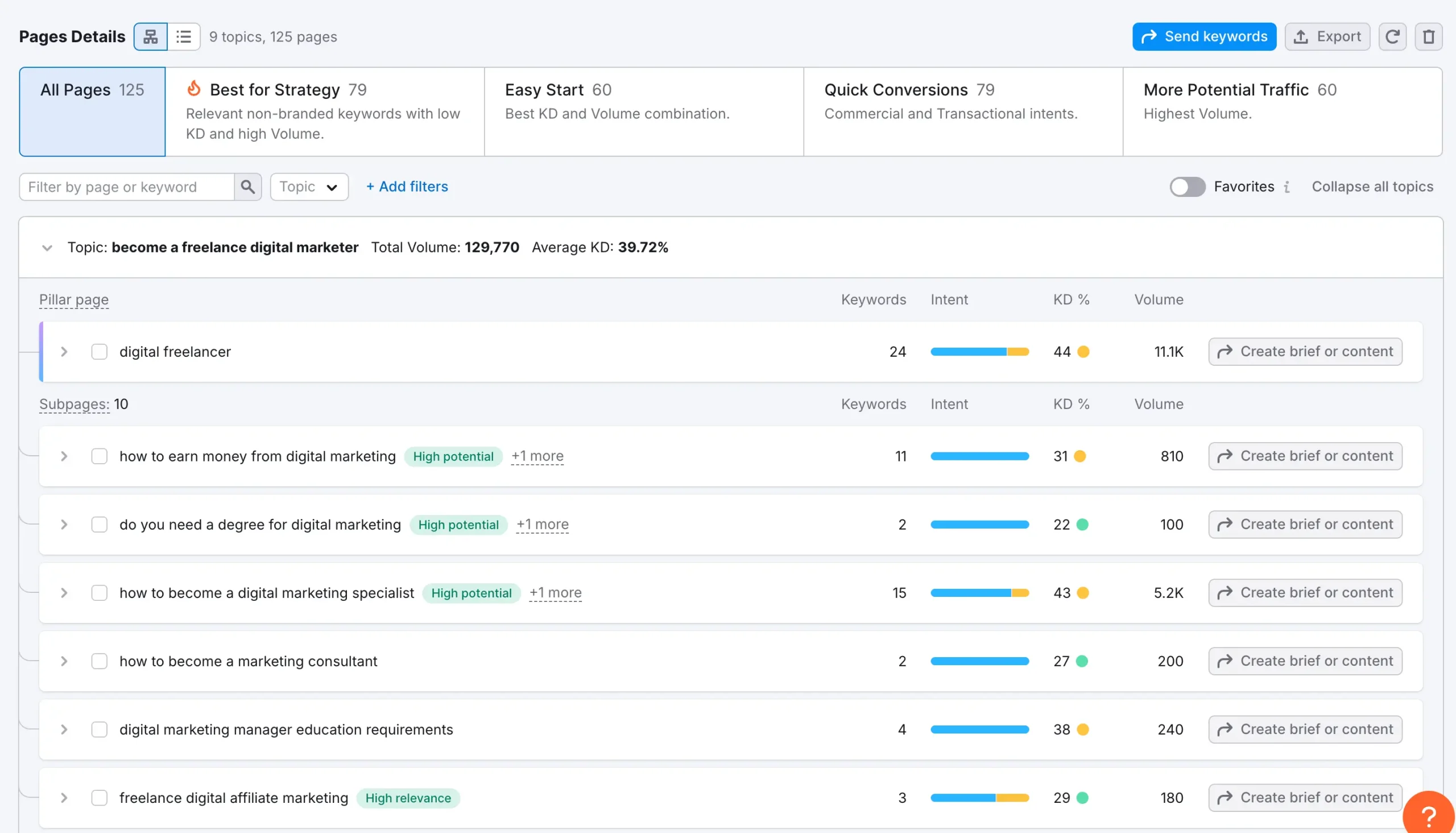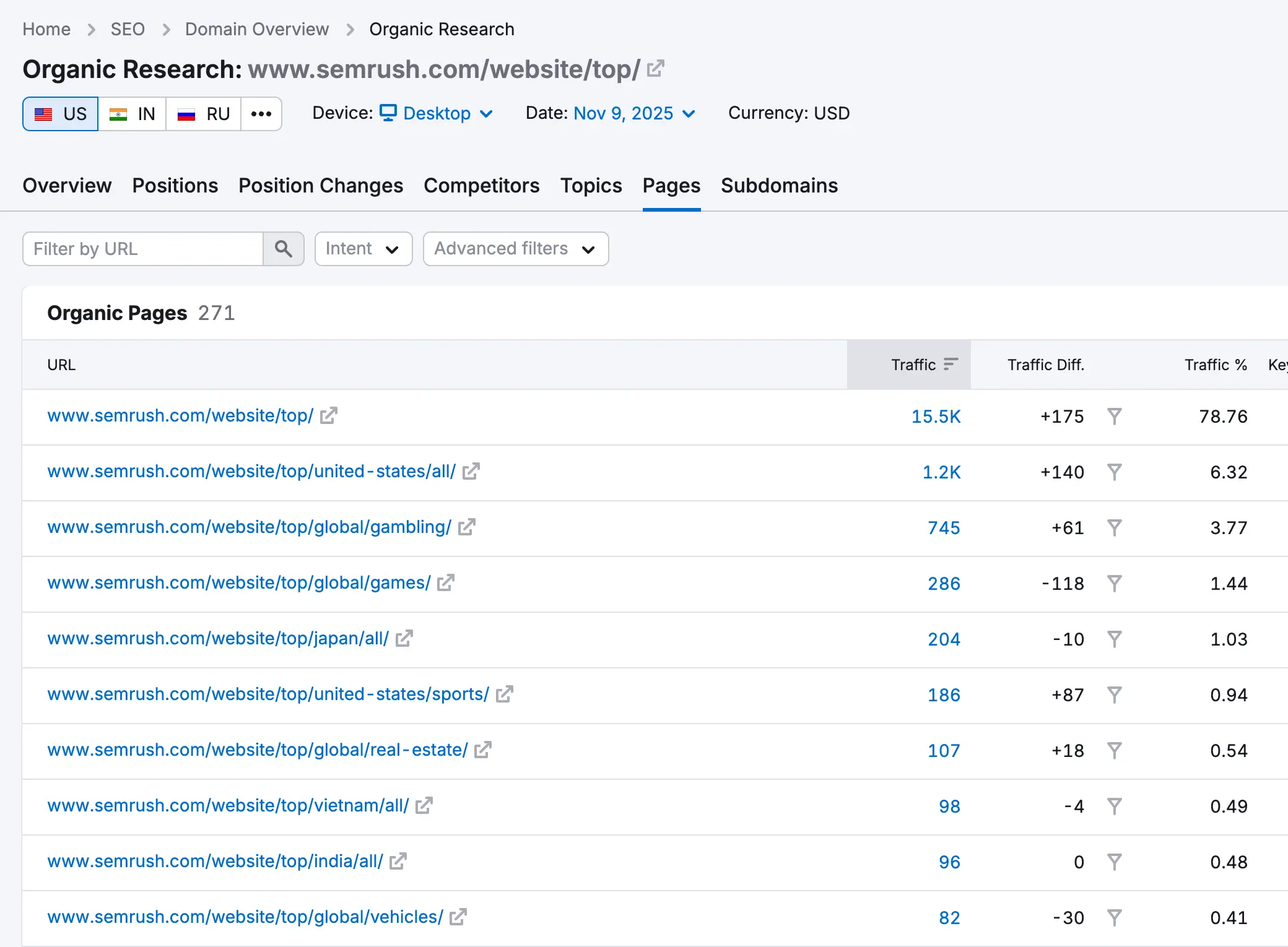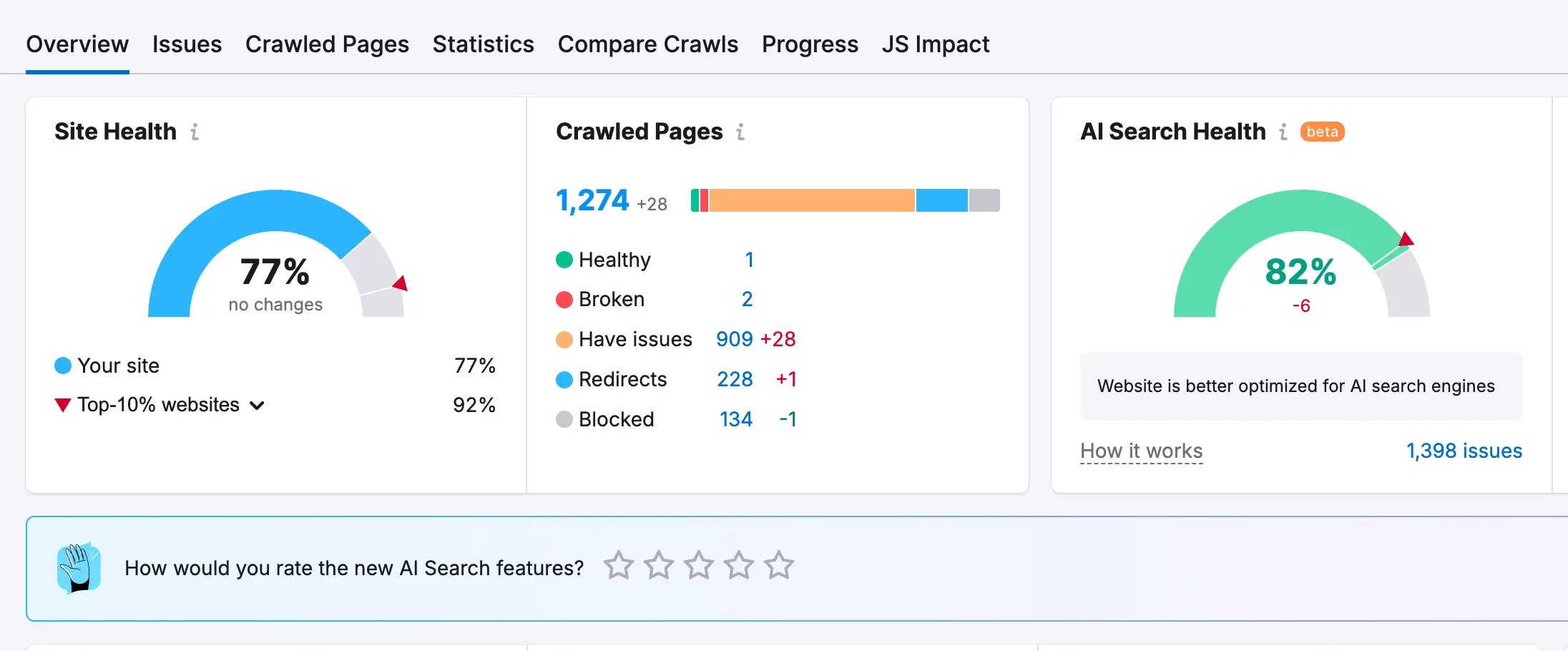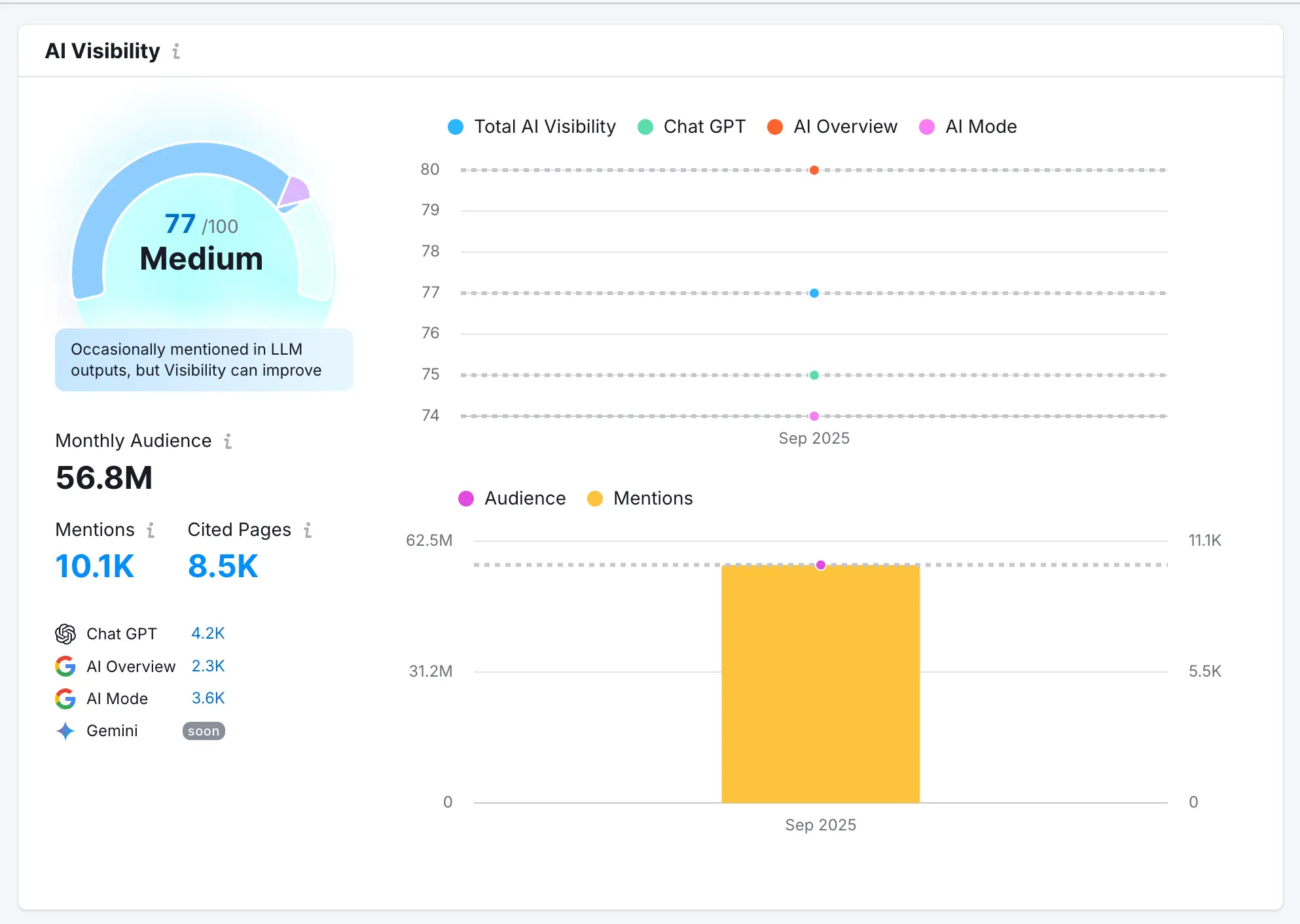Disclaimer: This post contains affiliate links. I earn a commission if you make a purchase at no extra cost to you.
Remember when SEO was about finding high-volume keywords with a low keyword difficulty score and creating long-form content to target those keywords?
Well, those days are gone for good. Today, search engines and LLMs reward websites that show deep expertise and credibility around entire subjects, not just individual search terms.
That’s where topical authority comes in.
What Is Topical Authority?
Topical authority refers to the level of expertise and trust your website demonstrates in a specific subject area. Instead of creating isolated pages for separate keywords, you build interconnected clusters of content that fully explain, answer, and support every aspect of a topic.
This guide will show you exactly how to build topical authority step by step. You'll learn how to do research and organize your content into topic clusters, measure your results, and expand your authority over time.
And it's not just theory. It's the same process we have used to generate more than 600K visits from Google organic search over the last year.
Step-by-Step Guide to Building Topical Authority
To build topical authority, organize your website content into structured topic clusters instead of targeting individual keywords. Start by identifying a few core topics that reflect your expertise, perform intent-based keyword research, group related terms into pillar and cluster structures, and create in-depth pillar pages supported by interlinked subtopic articles.
Measure your visibility across search and AI systems, and continuously update and expand your clusters to strengthen your authority over time.
In practice, this process involves the following steps:
- Define Your Core Topics
- Perform Intent-Based Keyword Research
- Group Keywords into Pillar and Cluster Topics
- Start by Creating Your Pillar Pages
- Build and Interlink Supporting Content
- Measure Your Topical Authority
- Maintaining and Expanding Your Topical Authority
Step 1: Define Your Core Topics
Before creating a topic cluster, it's essential to understand how the topic cluster model works and why it’s the foundation of topical authority.
In simple terms, a topic cluster is a group of interlinked pages centered around a broad pillar topic.
- The pillar page serves as the main hub, providing a comprehensive overview of the subject.
- The cluster pages explore subtopics in greater depth and link back to the pillar.
- Together, these pages form a structured ecosystem that signals to search engines: “This site covers this topic completely.”
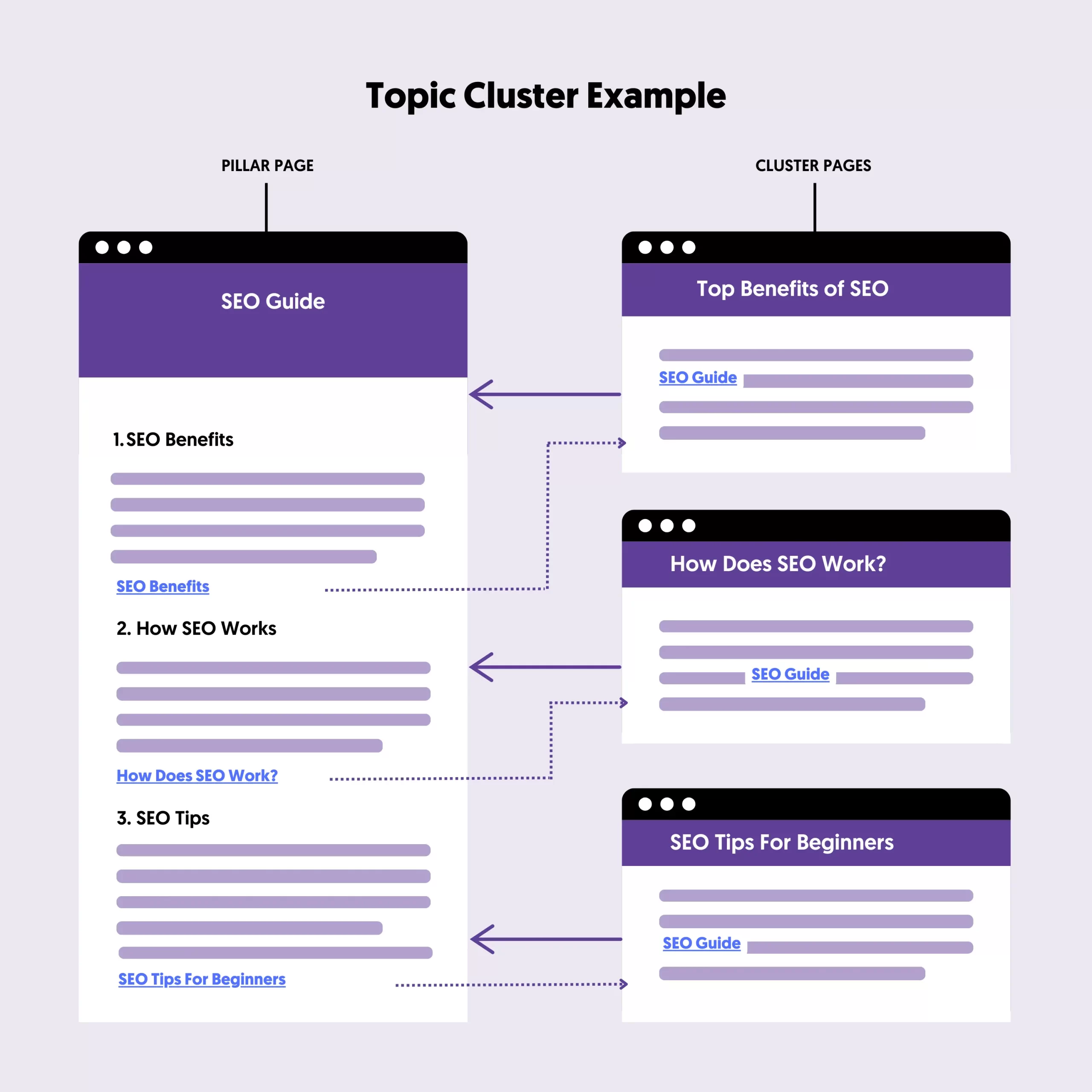
This model helps you:
- Prevent keyword cannibalization (where multiple pages compete for the same term).
- Improve internal linking and crawl efficiency.
- Establish stronger relevance signals for your main topics.
Start by identifying 3–5 main topics that align with your business, audience, and expertise. These are the areas where you want to become a recognized authority.
Your topics should meet three criteria:
- They represent key areas of your brand or service.
- They have substantial search interest.
- They can be broken down into multiple subtopics.
For a digital marketing website, for example, suitable core topics might include:
- SEO
- Content Marketing
- Google Analytics
- Social Media Marketing
- Freelance Digital Marketing
Each of these can later expand into dozens of detailed cluster pages.
Use Semrush SEO Toolkit to build topical authority. Try Free for 14 Days.
Step 2: Perform Intent-Based Keyword Research
Once you know your topics, you need to find and group the right keywords for each. The goal isn’t just to list keywords, but to understand the search intent behind each query.
The main types of search intent are:
- Informational: The user wants to learn something (“what is link building”).
- Transactional: The user is comparing or ready to act (“best SEO agency”).
- Navigational: The user seeks a specific brand or resource (“Reliablesoft SEO course”).
Mapping intent correctly prevents content overlap and cannibalization, where two pages target the same keyword and user intent.
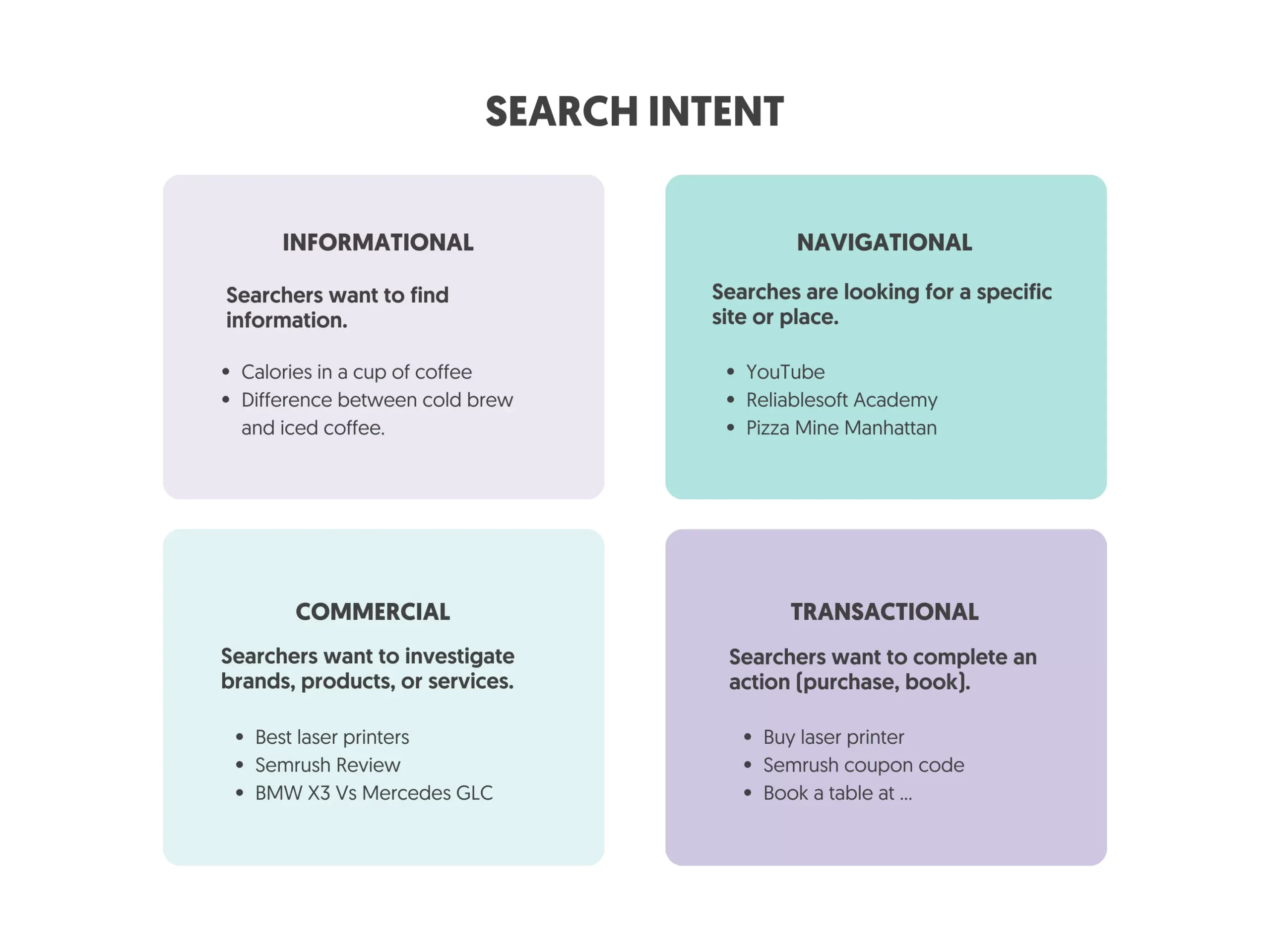
Step 3: Group Keywords into Pillar and Cluster Topics
Once you’ve gathered your list of keywords, the next step is to organize them into a clear content structure. This is where most SEO strategies fall apart, because doing it manually is time-consuming and prone to error.
The goal here is to identify which topics deserve a pillar page (a broad, comprehensive guide) and which belong as cluster pages (supporting articles that explore subtopics in depth).
To do this effectively, I use the Semrush SEO Toolkit, which makes the whole process easier through a combination of keyword research, clustering, and analysis tools.
For example, if you want to build authority about a specific topic, the Keyword Strategy Builder tool will do the keyword research for you and group keywords into clusters.
For each cluster, you're given the pillar page and supporting pages as well as keyword difficulty and search volume.
The biggest benefit of using a tool like this instead of doing everything manually is accuracy and scalability. When handling clustering in spreadsheets, it’s time-consuming to do the groupings and accurately calculate the potential traffic gains.
Semrush automatically groups semantically related terms, so you can focus on content creation rather than endless data sorting.
Once your keyword groups are finalized, you’ll have a clear roadmap for every cluster: which keywords to target, what content to create, and how all pages will connect to the main pillar.
Step 4: Start by Creating Your Pillar Pages
Once your topics and keyword clusters are ready, the next step is to create your pillar pages first.
A pillar page acts as the central hub for a topic. It introduces the main subject, summarizes each subtopic, and links to all supporting pages within the cluster.
When done right, it helps users and search engines understand that your site covers the topic comprehensively.
Think of your pillar page as the “master guide” that answers every broad question about the topic while pointing readers to deeper resources for more specific details.
Here is an example from our pillar page on 'How to Become a Digital Marketing Freelancer'. The page provides a comprehensive overview of the topic with links to the supporting pages.
A good pillar page has a clear and logical structure. It provides enough detail to rank independently but doesn’t repeat what’s in cluster pages.
Step 5: Build and Interlink Supporting Content
Supporting articles are where you go deep into subtopics. Each should focus on a specific keyword or question, answering it fully while linking back to the main pillar.
Best practices:
- Start each post with a clear, user-focused headline.
- Use related keywords naturally in the text.
- Include internal links to other cluster articles.
- Add breadcrumbs and consistent navigation.
To learn more, read our post on How to Increase Organic Traffic, which explains the process in more detail.
Step 6: Measure Your Topical Authority
Publishing your pillar and cluster pages is a crucial step, but it's not the end of the story. With the levels of competition in every topic, it is essential to measure your topical authority on a specific topic, compare it with that of your main competitors, and try to improve using real data.
Let’s go through the most effective ways to measure topical authority using available data.
Measure SEO Visibility by Topic Cluster
Most SEO tools measure visibility by keyword or domain, but to assess topical authority, you need to analyze clusters, not just pages.
Here’s how to do it using the Semrush Organic Research report:
- Go to Semrush → Domain Overview → Organic Research.
- Enter the URL of your pillar page or cluster folder (for example, /email-marketing/ or /seo/).
- The report will show you all keywords that this specific URL and its related pages currently rank for in Google.
- Use the “Positions” tab to see how those rankings are distributed (Top 3, 4–10, 11–20, etc.).
- Filter by topic-related keywords to understand how visible you are for that specific subject area.
You can use this report to analyze the performance of your clusters and those of your competitors. Here is an example analyzing one of Semrush's topic clusters.
Analyze Internal Linking and Coverage Gaps
Topical authority doesn’t just depend on keyword rankings, but it also depends on your on-page SEO and how connected your cluster is internally.
You can measure this by auditing your internal linking structure in the Site Audit section.
Look for:
- Orphan pages: Subtopics that aren’t linked from your pillar.
- Broken links: Missing or outdated connections within the cluster.
- Depth issues: Important pages are buried too deep in the site hierarchy.
Improving these internal links helps distribute authority evenly across the cluster and strengthens your topical signal in Google’s eyes.
Measure AI Visibility in LLMs
SEO visibility tells you how your content performs in search results, but today’s discovery landscape extends beyond Google.
Large Language Models (LLMs) like ChatGPT, Gemini, and Claude now surface information directly from high-authority domains to answer user prompts.
That’s why it’s essential to understand your AI visibility or how frequently your content appears in AI-generated responses.
You can estimate this using Semrush’s AI Visibility Toolkit (included in Semrush One), which analyzes your presence across AI systems and identifies:
- How often does your domain appear in AI responses for your target topics?
- Which competitors are cited more frequently by LLMs?
- Which specific topics or entities trigger AI mentions for your brand?
Tracking this data shows whether your content is recognized by AI models, not just indexed by Google. Over time, improving topical depth and entity coverage will help your brand appear more frequently in AI-assisted search results.
Semrush One merges keyword-based SEO metrics with prompt-level AI search insights in one platform. Try Free for 7 Days.
Step 7: Maintaining and Expanding Your Topical Authority
Building topical authority is not a one-time project. You need to monitor your results and update and expand your content.
Here’s how to sustain it long-term:
1. Update Content Regularly
Refresh your pillar and cluster pages at least once a year. Add new examples, tools, and data to keep them current. Update outdated references and improve internal links to new content.
2. Merge or Redirect Overlapping Articles
If you have multiple posts covering similar topics, combine them into a single comprehensive guide. This eliminates cannibalization and concentrates authority on one strong URL.
3. Expand into Related Topics
Once your site is strong in one area, branch into adjacent subjects. For example, a site that dominates “SEO Basics” can expand to “AI SEO” or “Entity Optimization.” This creates natural growth paths while maintaining relevance.
4. Audit Your Internal Links
Review your interlinking quarterly. Ensure every subpage links to its pillar and at least two related articles. Identify orphan pages and connect them to strengthen your site’s topical web.
5. Track Cluster Performance
Use analytics tools to monitor which clusters drive the most traffic and conversions. Identify weak spots and create new content to fill the gaps. Over time, this turns your site into a structured knowledge hub.
Final Thoughts
Search engines with the help of AI are evolving toward understanding meaning, not just matching keywords. To succeed in this new era, your content strategy must evolve too.
Instead of targeting isolated terms, focus on building topical authority, proving to both users and search engines that your site is a trusted expert in its field.
By defining core topics and structuring your site into clusters, you build authority that expands your online visibility and credibility over time.

